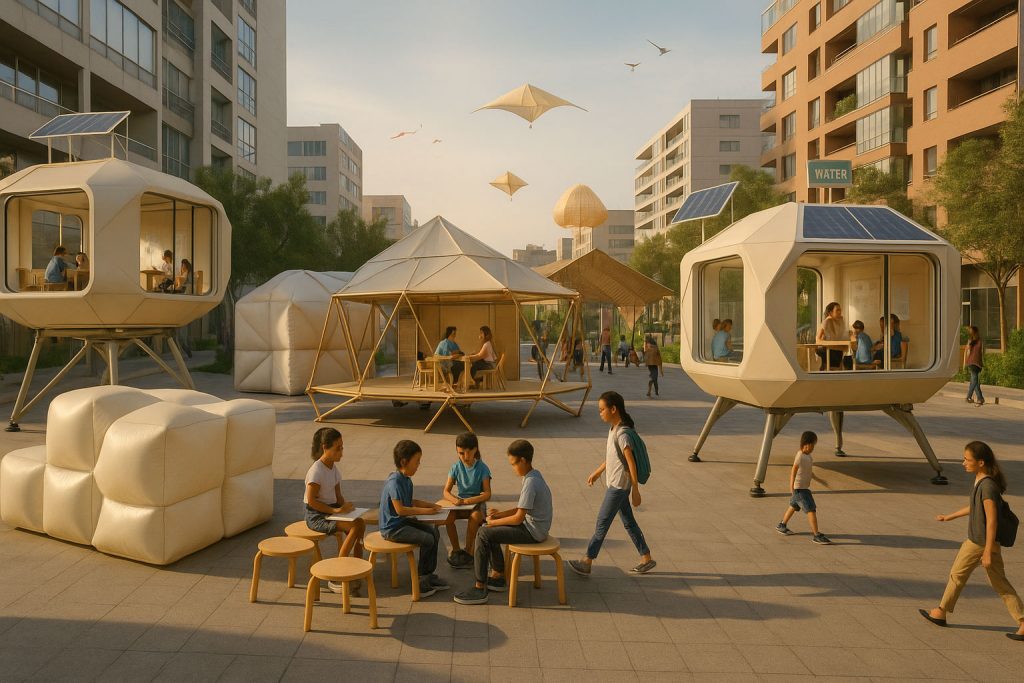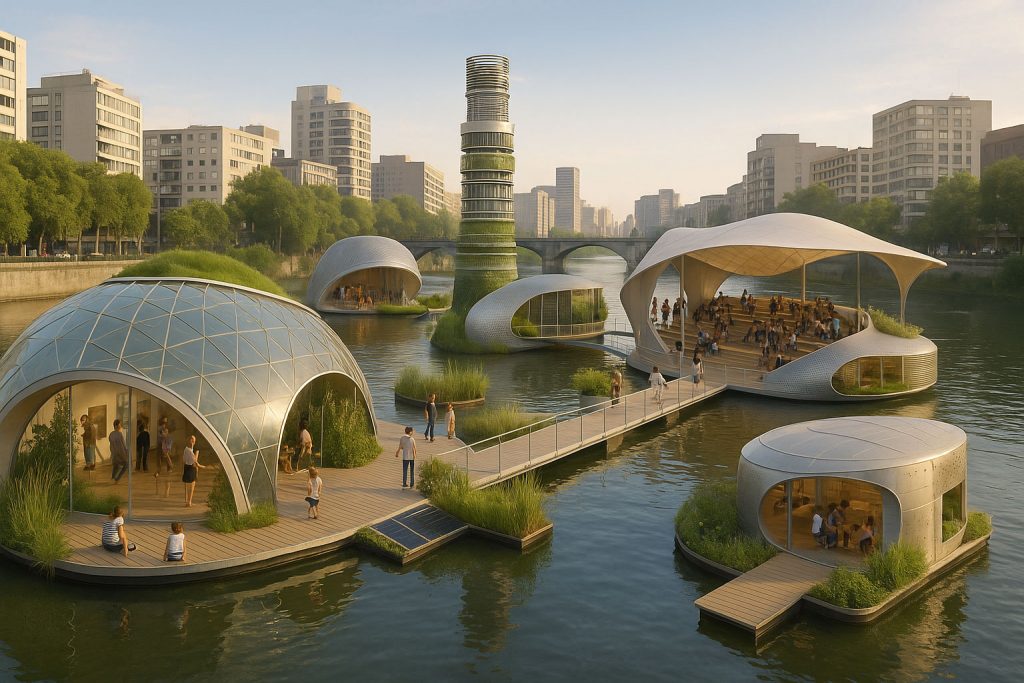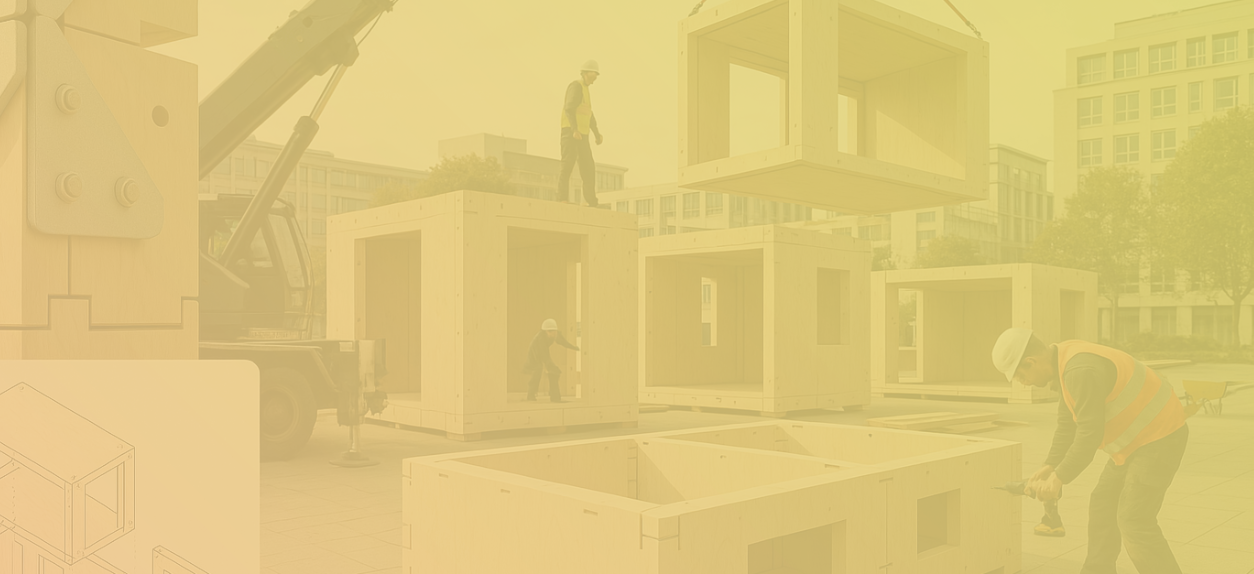

Returning to the topic of shelters, I considered what would happen if this idea were extended to a larger scale, considering shelters not only as isolated spaces, but as the formation of an entire community.
My proposal is to think of the city not as a permanent accumulation, but as something that can also disappear, be dismantled, and re-emerge with other logics. This presentation is called The Dismantling City and is based on a question: Can the ephemeral be strategic in contemporary urbanism?
Ephemeral architecture
We live in a world where permanence is no longer a guarantee. From pandemics to mass displacement, to climate breakdown, the city must be able to adapt quickly. But instead of reinforcing rigidity, why not explore dismantling as a tactic?
In this image, we see an idea of an emergent city: emergency pavilions, temporary structures, architecture designed not to last, but to respond. Dismantling is no longer a failure: it is a form of urban intelligence.
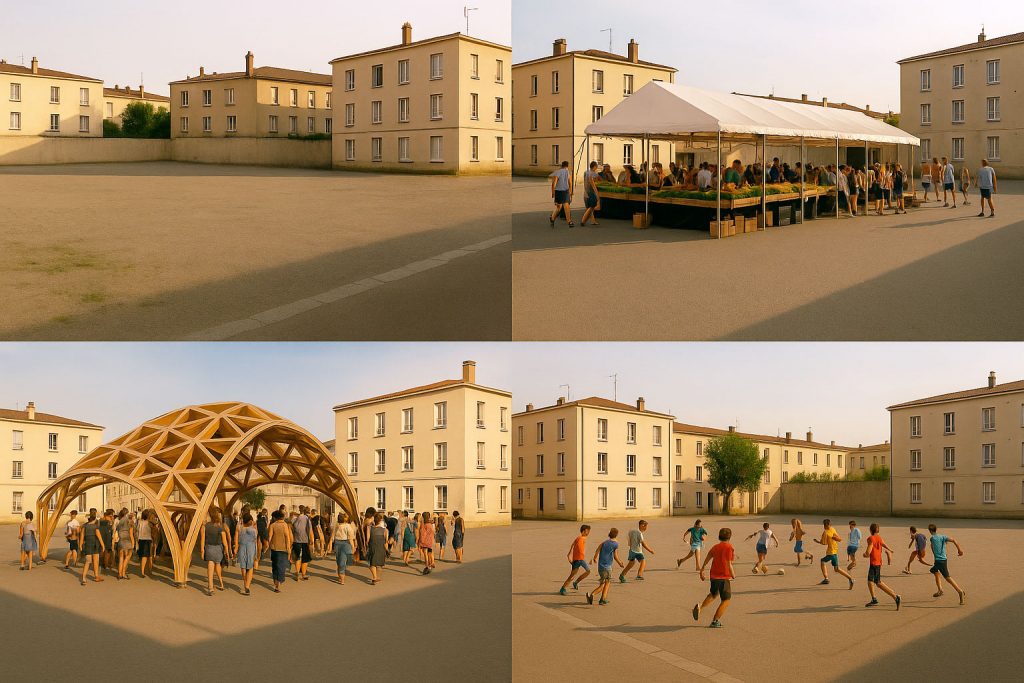

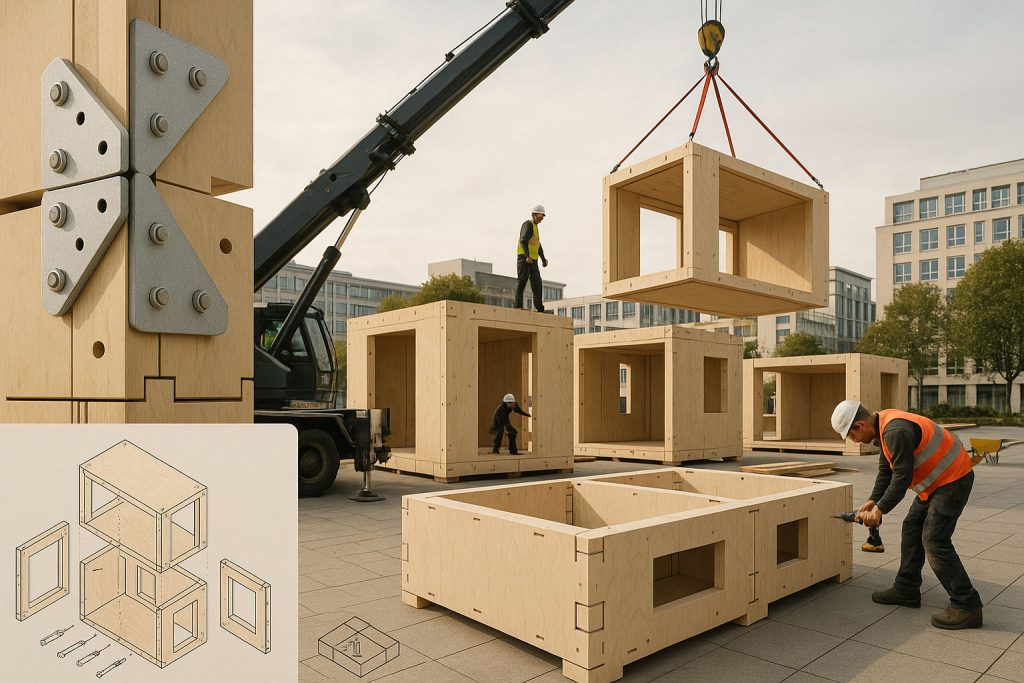

Ephemeral architecture has traditionally been underestimated, viewed as weak and utilitarian. But today we propose the opposite: the ephemeral is strategic. Designing to disappear can be more powerful than designing to endure. And this has profound architectural, political, and ethical implications.
Modularity is not just about constructive efficiency. It is the basis for adaptable architecture. Projects like WikiHouse or Shigeru Ban’s emergency structures show how intelligent assembly makes it possible to respond to unpredictable contexts. What if we think of an entire city as a system of interchangeable parts?
Low-impact materiality
Materials also speak. Cardboard, stretched fabric, bioplastics, lightweight metals… all give us a new perception of lightness. These materials are not only easily disassembled, they are also recyclable or biodegradable and allow for the creation of low-impact structures, designed with a second life in mind.
Designing with a defined duration completely changes the logic of the project. We no longer seek eternity, but cycles: weeks, months, perhaps a year. What kind of architecture emerges if the question is not “how long does it last,” but “when does it go away”?
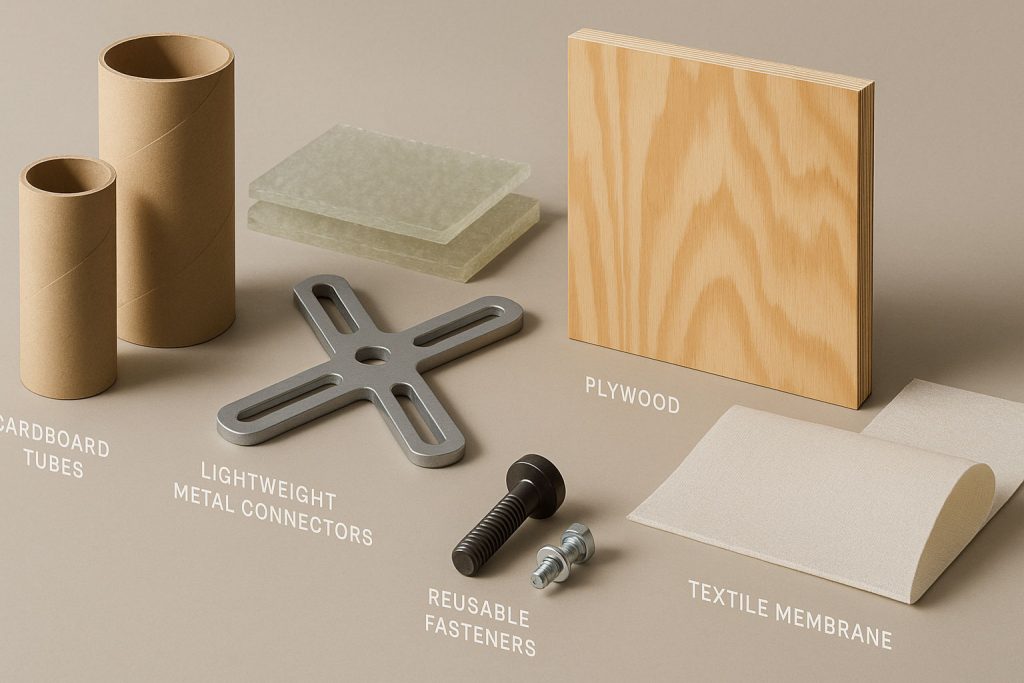

n'UNDO
n’UNDO (Don’t Build, Dismantle, Reuse) is a Spanish critical architecture collective that proposes intervention through subtraction—that is, not building—as a conscious, ethical, and radical act. Their motto is clear: “Build less to live better.”
Through projects and manifestos, n’UNDO advocates strategies such as:
- Dismantling the unnecessary
- Reusing the existing
- Prioritizing invisibility or minimal impact
- Intervening without leaving a permanent mark
Their approach challenges the developmentalist logic that associates architecture with the production of volume and permanence. Instead, they propose that design can be found in omission, lightness, and reversibility.
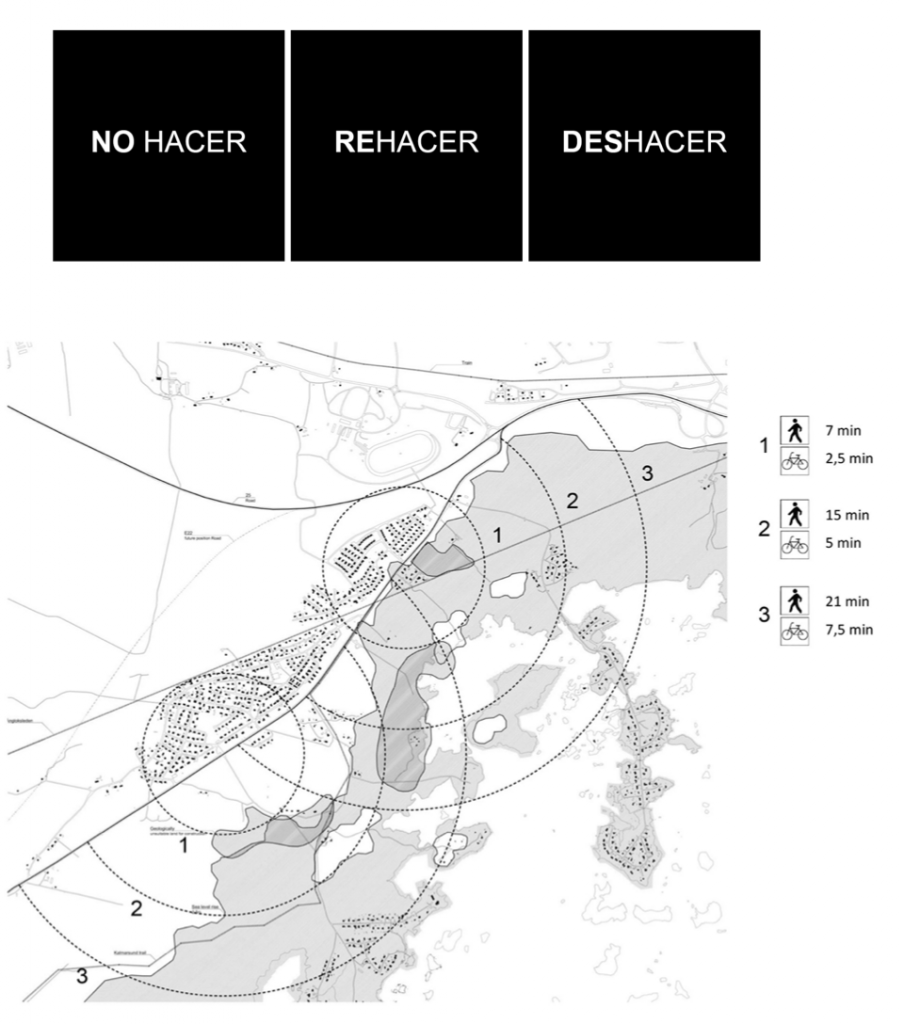

Conceptual application:
- Ephemeral architecture becomes a strategy of minimal intervention with maximum adaptability.
- Designing to dismantle is not a constructive failure, but a conscious gesture of sustainability and care for the land.
- The ephemeral is not precarious, but necessary in its proper measure.
